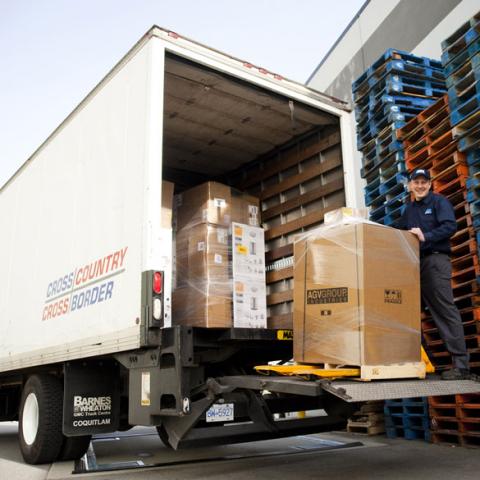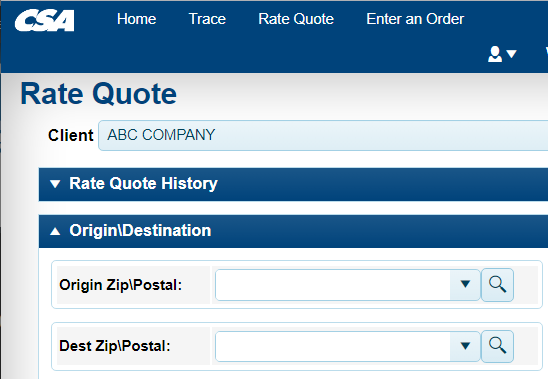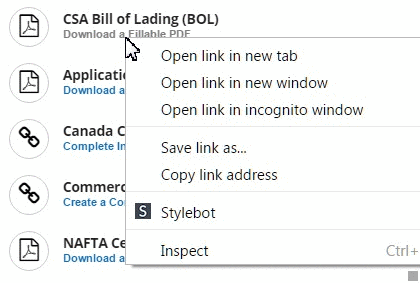How to Handle Freight Damaged Items the Right Way: A Guide
How Do Freight Items Get Damaged?
- Some damage can be avoided by simply being careful. Other damage is unforeseen. Here are some of the most common ways freight items get damaged while in transit:
- Poor packaging: All packages need padding, even if the item does not seem especially delicate. Bubble wrap, Styrofoam, air bubbles, corrugated cardboard, or an eco-friendly alternative goes a long way. New cardboard boxes should be used for maximum sturdiness. Box corners and edges should be taped.
- Rough handling: Setting a pallet down on unlevel ground, slamming shipments up against each other, or other rough handling can result in freight damaged items.
- The way the items are positioned in the truck: Not paying attention to box instructions like “this side up,” stacking packages haphazardly, or positioning them unevenly leads to packages being jostled around and damage freight transit issues.
- Car crash, rough roads, or dangerous driving: Acts of God, bad road conditions, and unpredictable travel circumstances that are out of anyone’s control can cause freight mishaps.
How to Avoid Damaged Cargo
Who Is Responsible for Shipping Damage?
- When you detect damage, it is usually not clear when or where the damage occurred in the supply chain.
- It is the responsibility of the supplier to redesign or stop carrying an item that is prone to damage.
- It is the responsibility of the manufacturer to provide adequate packaging.
- It is the responsibility of the carrier to drive carefully, keep shipments safe and secure, and handle them gently.
What to Do if a Shipment is Damaged
- First, make sure you have read the return policies from the suppliers you are ordering from. Read your carrier and insurance policies as well. Each company has its own process, and it is better to be familiar with it beforehand instead of trying to understand it when you are frustrated about the damage. These policies will lay out the process specific to you, from how to submit a freight claim to how long it takes to get a replacement item.
- Accept the damaged transit freight item(s). If you detect damage straight away, it may be your impulse to refuse it, but that will only cause more problems. If you detect damage later, rest assured that you made no mistake in accepting the shipment. Refusal to accept means the item will be transported back to the supplier, and you will likely be charged with return shipping and storage fees. You can refuse it, but there is a better chance you will get compensation if you accept it.
- Check for damage before signing the Bill of Lading (BOL). Document damage on the BOL.
- Tell the driver about the shipment damaged items. Do not lose your cool or accuse them of inflicting damage. The damage is not necessarily their fault, and it’s hard to tell at what point it was inflicted.
- Document the damage. Keeping the damaged items allows you to do this. Take notes on everything. Immediately take photos of the damaged items and the packaging it came in. If one item came damaged and one came intact, take photos of both. Don’t wait: By documenting immediately, it’s stronger proof that you didn’t accidentally do the damage yourself, and that it was indeed inflicted before you handled it.
- Tell the carrier as soon as possible. Some sellers only resolve these matters if reported within a certain time frame. So be on the safe side and report the damage immediately. Knowing their policy on damaged items will inform you on what to expect in terms of full or partial refunds, the timeline, and what to do next (reorder, repair, etc.). Maintain professionalism even if you are frustrated.
- Keep track of all the paperwork involved, correspondences, and photo documentation in case they are needed for your claim.
- Pay the freight bill.
- It is your responsibility to file a claim as soon as possible. (A claim is a request for the carrier to reimburse you for the damaged freight.) Some carriers do not acknowledge claims after a certain time period has passed. You should hear back from them within a few weeks. If you have not heard from the carrier about it after a month, follow up.
- The policies you read in step 1 will guide you through the reorder process. Inform any customers about the delay this will cause.
- In the meantime, store the damaged goods. And though it may be tempting to get rid of it, discarding damaged freight will impede the claims process.
- If the carrier and supplier are not willing to resolve the issue, look into whether your credit card company will grant you a refund.





